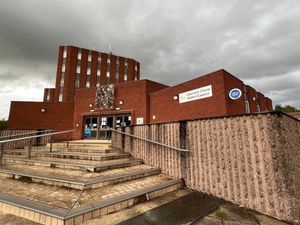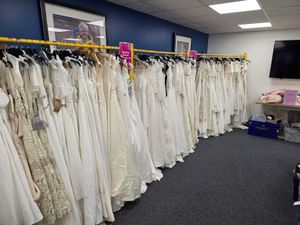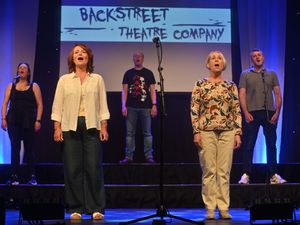Council passes budget as alternative proposals are thrown out
An “alternative budget” for Cannock Chase Council which included removing £100,000 earmarked towards keeping a much-loved museum in its current home has been put forward by the Conservative group – but failed to gain support from Labour and Green Party members.

Instead the budget proposed by the current Labour and Green administration was passed at Wednesday’s full council meeting, following a sometimes-stormy debate.
Cost-saving proposals to relocate the Museum of Cannock Chase from its current home at the former Valley Colliery in Hednesford were first put forward by the previous Conservative administration in last year’s budget. But the plan met with strong opposition the district – and a petition against it was signed by more than 3,200 people.
Moving the museum to another building managed by Inspiring Healthy Lifestyles, which runs leisure and cultural services on behalf of the council, could save £100,000 in 2024/25, a report revealed last year. The planned saving was removed from this year’s budget put forward by the new administration however.
On Wednesday (February 21) council leader and Labour member Tony Johnson presented the budget for members’ approval. He said: “When I became the leader 10 months ago, I said I wanted this administration to be genuinely open, honest and to strive for political stability, to progress our priorities and reflect the views of the residents and businesses of our great district. I added that in challenging times we really do need to pull together for the benefit of our people.
“We have sought to reflect the views of residents and businesses – for my administration this includes doing everything in our power to secure the immediate future of the Museum of Cannock Chase at its present location. We will explore new ways of funding its long term future as we committed to do.
“This budget-setting process has been challenging. We have sought to protect services to residents and I believe we that this budget does that.
“To be able to maintain services that residents need now more than ever, the council has had to plan to increase council tax by 2.99%. This is in part driven by the funding settlements from central government requiring councils to raise much of their revenue through local taxation rather than being supported through grants from central government.
“Our proposed increase of 2.99% from £236.92 to £244 is less than 14p per week for an average Band D household. This will be a challenging year ahead for the council, but under my leadership we will do everything we possibly can to provide good services to the people we serve, whether they live in Cannock, Rugeley, Hednesford or in our villages.”
The alternative budget, presented by opposition group leader Olivia Lyons, proposed reversing the plan to allocate £100,000 towards keeping the Museum of Cannock Chase in its current location. Instead the £100,000 was earmarked towards looking at the feasibility of creating a space for small, affordable incubator units for local start-up businesses.
The opposition group also called for a “fundamental review to enable the development of a new car parking strategy looking at, amongst other options, discounted season tickets.” And it considered assessing how artificial intelligence (AI) could be used by the authority to provide more targeted support to residents, to increase efficiency and reduce burden on staff.
The alternative budget report stated: “The Conservative Group believe it is imperative that we continue to have a museum in Cannock Chase that can house our fantastic local collection and tell the wonderful story of the local area and people. At this juncture and with the current financial backdrop, it is vital that careful consideration is given to what the future of the museum may look like.
“We are keen to preserve our local history and improve how the collections are housed and displayed to make our story even more accessible and attractive to local people; we would also like to ensure that the local museum collection plays a key role for local schools in educating local children, such as creating an addition of mobile exhibitions. In addition to preserving the amazing mining collection, we would also like to expand the focus of the museum to highlight the role our local area played during other periods in history, such as the two World Wars and the importance of Castle Ring.
“The current location of Cannock Chase Museum in the ageing, former Valley Colliery buildings is not energy efficient. We would like to therefore explore moving the museum collection into a more energy efficient space, with a lower carbon footprint, and a long-term affordable maintenance plan.
“We therefore propose to modernise the museum, in a more energy efficient and accessible space where full collections can be safely displayed and enjoyed. To do this, we propose maximising opportunities to attract additional support from organisations such as the Arts Council and the Heritage Lottery Fund.”
Labour member David Williams said he felt the alternative proposals would eventually lead to the shutting of the museum. But Conservative member Josh Bancroft said the Labour and Green Party administration had not presented any forward plan for the museum in its current location.
Green Group leader Andrea Muckley said a lot of work had been taking place behind the scenes however. Party colleague Councillor Mawle, who started the petition last year calling for the museum to stay in its current home, said after Wednesday’s meeting: “I’m delighted that our long fight to keep the museum in its home in Hednesford has been successful.
“The Museum of Cannock Chase has stood for decades in Valley Road, Hednesford. It rightly celebrates the proud mining heritage of this area.
“What the councillors who proposed the alternative budget couldn’t see is that it is not just a collection of buildings. It is the site of the Valley Colliery, which shaped Hednesford Town.
“It was the location of the regional Mines Training centre, through which hundreds of people passed before joining mines in Staffordshire and Shropshire, and it was also the base for the Mines Rescue Centre which saved many lives over the years. The museum brings in tourists and income to the whole town, protecting the livelihoods of local people and businesses.”





